Joy Neal Kidney's Blog, page 29
November 16, 2023
Dad’s Massey Harris Tractor
Dad had a red Massey-Harris tractor for a long time, although we never thought about taking a photo of ours. I think Dad’s was a Model 44, and not as pristine as this one.
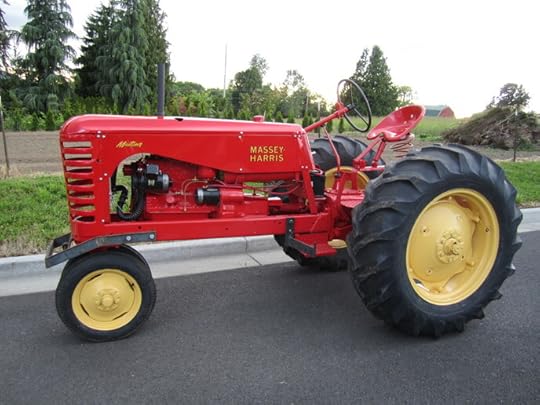
Whichever tractor did the cultivating, I remember my job once during lunch was to scrape off the cultivator sweeps or shovels, those diggers mounted onto the tractor.
Massey-Harris was started in Canada in 1891, merging the Massey and Harris manufacturing companies. In 1891, Massey merged with the A. Harris, Son & Co. Ltd. to become Massey-Harris Co. and became the largest agricultural equipment maker in the British Empire. In 1910, the company opened a factory in the United States, making it one of Canada’s first multinational firms.
In the 1930s, they introduced the first self-propelled combine harvester. Massey Harris also produced one of the world’s first four-wheel drive tractors.
From there, the history gets more complicated. You may read about it here. One interesting note: Raymond Massey, of the Massey manufacturing family, became a American film actor.
November 14, 2023
Winds of Change by Gail Kittleson
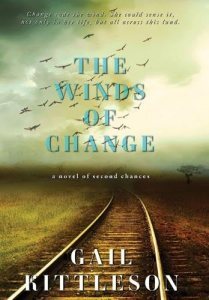
Gail Kittleson – Winds of Change
World War II stole her only son, and sickness took her husband. Her daughters and grandchildren live far away. Little is left for Dottie Kyle beyond cooking and cleaning at the local boarding house and a small town life that allows her to slip into a predictable routine.
Loneliness is Dottie’s constant companion.
Then along came Al Jensen.
 About the Author: When Gail’s not steeped in World War II historical research, writing, or editing, you’ll find her reading for fun, gardening, or enjoying her grandchildren in Northern Iowa. She delights in interacting with readers who fall in love with her characters.
About the Author: When Gail’s not steeped in World War II historical research, writing, or editing, you’ll find her reading for fun, gardening, or enjoying her grandchildren in Northern Iowa. She delights in interacting with readers who fall in love with her characters.
Women of the Heartland, Gail’s World War II series, highlights women of The Greatest Generation: These heroines make do with what life hands them and face great odds with integrity. No easy outs or pat answers for their struggles – it’s the thick of World war II. The same can be said of Dottie in In This Together, Gail’s first historical novel and of the women in her memoir, Catching Up With Daylight.
Gail Kittleson taught college expository writing and ESL before writing women’s historical fiction. From northern Iowa, she facilitates writing workshops and women’s retreats, and enjoys the Arizona Ponderosa forest in winter.
My thoughts: Gold Star mother Dottie Kyle has not only lost a son in the Second World War, she was widowed when her husband, a veteran of the first war, died. She takes a job that fills her time but the work and personalities are also wearing. There are changes afoot for several characters, especially for the cautious Dottie. A charming story of second chances, with captivating details that take readers back to the 1940s.
Here is Gail’s website.
November 13, 2023
That Dexter-Earlham Thanksgiving Football Rivalry
From Earlham’s point of view, from a November 1932 issue of the Earlham Echo:
BIG PEP MEETING GIVES TEAM SENDOFF
Program of Stunts, Yells and Speeches Was Calculated to Arouse Fighting Mood
A pep meeting at which about half the school student body and nearly twice as many alumni were present was an event last Wednesday night at the school auditorium. About a dozen alumni football stars were called on for speeches and a few words were also spoken by the coach and superintendent. The entire football squad was in attendance, though the meeting dispersed in time to assure them a good night’s rest before the game.
A big feature of the meeting was a scene depicting a home in which radio broadcasts of the Earlham-Dexter game were being received. Harry Stegal, in the role of a disabled football player was shown seated by the radio with his sister, Paula Bechtel, and nurse Eleanor Benson, while the father of the family, Jim Stegal, doddered annoyingly about. Some ingenuous bits of comedy were brought out at different stages of the broadcast as Earlham’s star of hope on the gridiron rose and fell, then rose again for a rousing victory.
All stunts and preparations for the pep meeting were made by Raymond Spatz, Virgil Badgerow and other alumni without cooperation from the student body or school faculty generally. Older grads have been shaking their heads and wondering if this dropping spirit doesn’t account for lagging interest in a victory on Thanksgiving Day.
This item was in the November 29, 2022 issue of the Earlham Echo under “Echoes of the Past” – 90 YEARS AGO – 1932.
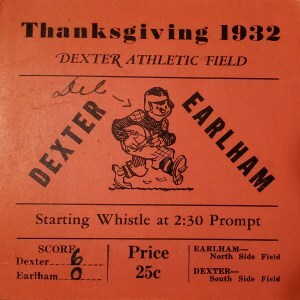
The Thanksgiving game that year was Delbert and Donald Wilson’s last game of their senior year. Del made the winning touchdown, and his sister Doris kept the ticket from the game.
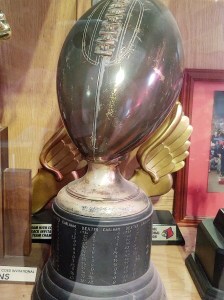 The trophy is now in a case in the Earlham School.
The trophy is now in a case in the Earlham School.
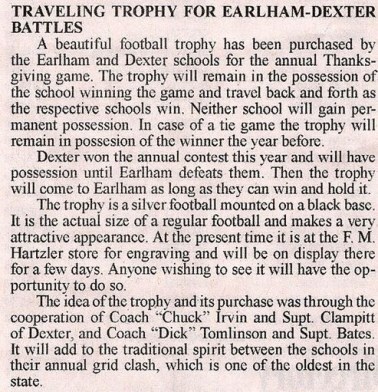
November 9, 2023
November 6, 2023
D. R. Wilson’s Public Sale circa 1917
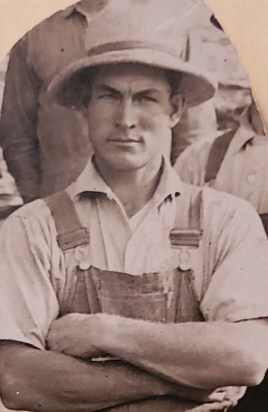 In 1917, Clabe Wilson worked in the Glendon Brick and Tile Works, Guthrie County, Iowa.
In 1917, Clabe Wilson worked in the Glendon Brick and Tile Works, Guthrie County, Iowa.This is hand-written on the back of a 1905 sale bill of D. R. (Daniel) Wilson, who died in 1909. Georgia was his widow. She died in late 1917, so the sale may have been that fall. I believe the handwriting is their son Clabe’s:
—–
Public Sale
I will sell at the Georgia A. Wilson farm 5 miles south of Panora and 5 miles West of Linden and 4 1/2 east of Monteith and 2 1/2 miles North of Dale on
at 1 Oclock pm Sharp
136 head of live stock 136
5 head of horses 5
Bay mare 4 years old wt 1700 infoal. Black mare 8 years old, infoal wt 1300. Spotted horse 9 years old wt 1200. 2 spring colts.
4 head of Cattle 4
One good milk cow 3 years old. One yearling heifer. Two spring calves 1 steer 1 heifer.
127 head of Duroc hogs
All pure bred but can not be recorded.
60 head of spring shoats will average about 125 lbs. 8 old sows and 58 fall pigs. One pure bred male wt about 400
12 acres of corn in field 4 tons of clover hay in stack 25 acres of corn stalks 100 bu of potatoes
Farm Implements. 1 wagon good as new 3 in. Gasoline engine and pump jack in good running order. 1 Oscillating bobsled new. 1 End gate seeder. 1 Corn planter. 1 six shovel walking colvator [cultivator]. 2 [stirring] plows. 1 16 in Disc 8 wheel. 1 Iron wheel wagon and Hay rack. 2 section harrow. 2 good hog troves [troughs] and slop cart. 1 set of work harness 1 1 1/2 in. 1 set of single harness. 1 Buggy. 1 saddle and bridle. 6 Dozen Leghorn chickens. 1 Old Trusty incabator [incubator for baby chicks] good as new. Some household goods.
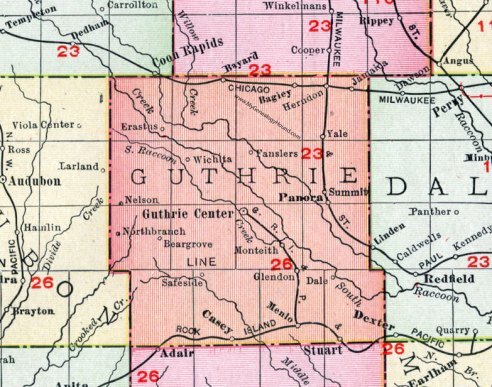
Leora’s Early Years: Guthrie County Roots
 Georgia Wilson’s house in Panora, built in 1900 and pictured on the cover, still stands in Panora today.
Georgia Wilson’s house in Panora, built in 1900 and pictured on the cover, still stands in Panora today.
November 4, 2023
The Leora Stories at the Perry Public Library on November 11

Perry Public Library Welcomes Iowa Author Joy Neal Kidney Saturday, November 11, 2:00 PM to 3:00 PM, Library Community Room. Free Art on the Prairie Event
Art on the Prairie, Perry, Iowa
Join Iowa author Joy Neal Kidney at the Perry Public Library as she shares her experiences writing Leora’s Letters, the story behind the brothers remembered on the Dallas County Freedom Rock® at Minburn, Iowa.
—–
I’m looking forward to telling stories in the town which is the setting of so much of my family history, history that began before World War II.
When Clabe and Leora Wilson became tenant farmers at Minburn in 1939, they did most of their trading in Perry, just a few miles north. My mother, Doris Wilson, became a waitress in Perry, at the McDonald’s Drug Store, which also had a restaurant area and soda fountain. She was serving Sunday dinners there when radio music was interrupted for the announcement of the Japanese attack of Pearl Harbor.
After all five sons had left home to serve in the war, Clabe and Leora bought an acreage SE of Perry. Most of the terrible telegrams were delivered there. Junior Wilson was buried in Violet Hill Cemetery in 1945. Clabe died of a stroke and a broken heart in 1946.
One stone in the cemetery remembers Dale and Daniel Wilson, so I took for granted that all three brothers were buried there. Every Memorial Day during my childhood, and several times as an adult, I “helped” Grandma, Mom, and Aunt Darlene arrange flowers at the cemetery.
Having lunch and shopping the Perry during the 1950s was a special occasion for these ladies at other times as well, and fun for two young sisters who got in on memorable outings.
Leora’s Letters: The Story of Love and Loss for an Iowa Family During World War II is the family story, which needed to be told so their great sacrifice will be remembered.
After Grandma Leora died, I had to find out what happened to the three sons she lost. What Leora Never Knew: A Granddaughter’s Quest for Answers, is my journey of discovery.
Both books are full of stories from the delightful northern Dallas County town of Perry, Iowa.
November 3, 2023
The First Review on Amazon for “What Leora Never Knew”
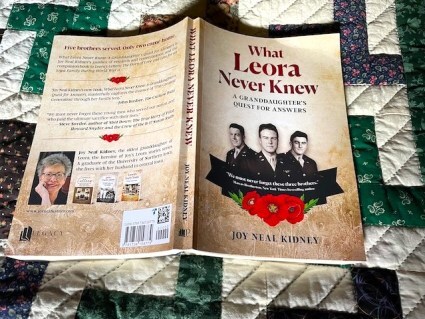
True American Heroes by Robert Frohlich
When I received my copy of “What Leora Never Knew”, Joy Neal Kidney’s fourth book, I read it in one afternoon, intrigued by the tale illustrated with documents and photos. I wanted to cry when I read the toneless telegrams which announced one tragedy after another; “The Secretary of War desires me to express his regrets…”.
Joy Neal Kidney writes in sparse midwestern prose which only emphasizes the drama of each episode. The family carries on, waiting with hope for more news of sons missing in action. Life goes on; the family regroups, comforting Leora while sharing in her grief.
In her first three books, Joy Neal Kidney gave us a dramatic look at the history of one Iowa family, one small slice of America, where ordinary people live, strive, and sacrifice. The first book “Leora’s Letters” tells of the true story of a family that loses three of five sons to World War II. Now, in her latest book, Kidney, through painstaking research, paints a detailed picture of the lives of these three men, her uncles.
You should read this book, not because it’s a sad tale. It is really a heroic tale, representing all those ordinary farm boys, truck drivers, and factory workers who left their honest work to lay their lives on the line for their country. We owe them a debt that can only be repaid by our willingness to live up to their dedication and love for this country.
Who is Robert Frohlich? (His wife made the quilt the book is lying on!)
November 2, 2023
My Three Favorite Reads of 2023

Shepherd.com just inaugurated its list of favorite reads by authors on their website.
Here is my list and why I chose each book. These are probably not a surprise to you since I’ve shared them before on my website, but I’m glad for this new way invite a wider audience for them.
Here are the favorite books chosen by 884 authors and super readers.
November 1, 2023
You’re Not Going to Believe this John Deere Model A Tractor Tank
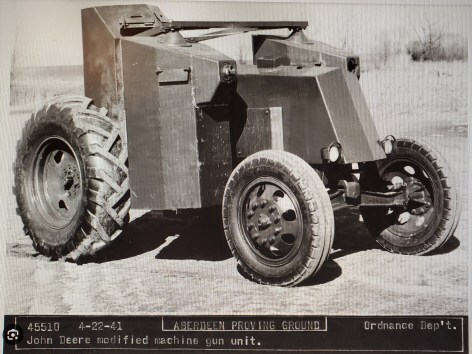 Aberdeen Proving Ground photo
Aberdeen Proving Ground photoA great-grandson of the founder of Deere & Company decided the company could manufacture a tractor tank for the Army by adding heavy armor and machine gun turrets to the John Deere Model A tractor, which was already in production.
By early 1941, two prototypes were built in secret at the Waterloo plant and shipped to the Aberdeen Proving Grounds in Maryland for testing. They were designed to carry a three-man crew–a driver and two gunners.
Alas, the tractor tanks proved to be under-powered, slow, and top-heavy, with even more flaws.
Even so, Deere received more than 1000 government contracts during the war, producing mobile laundry units, ammo, aircraft parts, tank transmissions, and more.
Decades later, two Iowa men decided to replicate the John Deere A-I and A-II tank prototypes, with compelling outcomes.
Also see the “Country Characters” story, “Iowa Farm Kids Re-Created WWII History,” in the October/November 2023 Our Iowa magazine.
October 31, 2023
Aboard a Liberty Ship, October 1944
A Month Aboard a Liberty Ship
 I never determined which Liberty ship Dan and Harry were on. This is Liberty ship SS Jeremiah O’Brien, San Francisco (which we toured years ago). Photo by Mike Hofmann, 2008
I never determined which Liberty ship Dan and Harry were on. This is Liberty ship SS Jeremiah O’Brien, San Francisco (which we toured years ago). Photo by Mike Hofmann, 2008While Chief Electricians Mate Donald Wilson, aboard the brand new aircraft carrier USS Hancock, was headed for the island of Ulithi in the Pacific, in October 1944, hundreds of troops, fourteen pilots, and five new P-38s sailed for Europe aboard a crowded Liberty Ship. Lieutenants Dan Wilson and Harry Wold were two of the pilots.
In a March 1989 letter to me, Harry Wold wrote that they’d left Hamilton Field in San Francisco on a slow troop train, taking seven days to cross the country to Camp Patrick Henry, Virginia.
Danny started a letter home on October 21, noting that it was also the date of his brother Dale’s first mission a year earlier. Dale Wilson had been missing in action since the end of November.
This letter was censored, and he couldn’t mail it until they arrived “at their destination.”
His bunk on the ship was in a small compartment with several other men, so he spent most of the time on the deck with his shirt off, watching the waves break across the bow, enjoying fresh air, listening to music from a phonograph. “All in all,” he wrote, “the time goes by pretty fast,” watching other ships, sharks, flying fish, and seaweed. “In the evening the main attraction is to line up by the side and watch them throw over the garbage.” As the evening grew dark, phosphorus particles glowed in the water, especially in the wake of the darkened ship.
 Lt. Harrison E. Wold, Dan Wilson’s best friend. 15th Air Force, 14th Fighter Group, 37th Fighter Squadron (P-38s), Foggia, Italy
Lt. Harrison E. Wold, Dan Wilson’s best friend. 15th Air Force, 14th Fighter Group, 37th Fighter Squadron (P-38s), Foggia, ItalyHis buddy, Harry Wold, wrote to his fiancée, “Laid around in the sun all day, talking with Danny Wilson, a kid from Iowa. Met him at Santa Rosa. He’s really a good kid, doesn’t smoke, drink, or run around with wild women. He’s a lot like Youtz, which makes him one of the two nicest fellows I’ve known.”
Six days later, Danny wrote home that had a good tan and had seen seagulls and other “odd-looking birds,” so he knew they were nearing land. “This ship goes at a good speed, possibly a dogtrot.” Hinting that they were nearing Gibraltar, he added, “We’ve put our watches ahead four hours from E.S.T. Wonder if they’ll have the Prudential Life Insurance sign lit up, if we go through at night?”
“I didn’t see the sign lit up,” he noted the last day of October, “when we went by in the moonlight.” Halloween reminded him of going out on the “80,” an 80-acre field near Minburn, to gather a few dozen little pumpkins in the evening, and his mother making them into pies the next day. “Then I’d probably be just one of the gang who would eat more than a sensible amount.”
“Hope you have knocked off a while to go squirrel hunting,” he told his dad. “I’m thinking of you always, Mom and Dad, and very much more than I’ve ever expressed it personally.”
Naples
After twenty-eight days on the ship, Dan “turned in his sea legs” and was at a Replacement Depot, in Naples, living in a tent with Lt. Wold and three other pilots. He mailed his Liberty Ship letter, with its green 8-cent airmail stamp, to Minburn. It was forwarded to Perry, where his folks had moved recently. Leora began to jot on the backs of envelopes the dates they arrived. “Arr. Nov. 15,” she wrote on this one.
Danny did some sight-seeing in Naples and bought a small silver bell inscribed “Capri.”
And he composed several letters, all censored, one to Doris and Warren. “I’m now somewhere in Italy,” he said. “I’m writing this on a big tin can in a pup tent.”
He said that people in the States didn’t realize how lucky they were, that the towns there were filthy, with some parts had been bombed. People tried to exist in filthy, meager conditions, with ragged clothes and no shoes. Some had a starved ox or horse and a cart and would sell anything, even themselves, to survive.
Danny had more training, about the “same kind of deal as Dale went through overseas before flying the first combat mission.” It certainly was keen to fly the P-38 again, he said. Their steel Marston Mat runways were slick in wet weather, and takeoffs and landings were made in a big spray of muddy water.
He owned an Italian-American dictionary, but the pilots had quite a time talking to the “Eyeties,” as he called them. A lot of locals knew more American than they did Italian.
“No, Mom, I didn’t go near where Don was.” Because his folks knew he’d started out in California and would take it for granted he’d end up in the Pacific, Dan tried to hint that he’d gone the opposite way, but his parents hadn’t caught on yet.
He sure hoped they would get word about Dale soon, and that the Japanese would go through with their promise to send names of their prisoners, especially after reports of the uncivilized things they’d done to their POWs.
Recently I got a note from a grandson of Harry Wold! He’s very interested in the stories about his grandfather and Danny Wilson.
Read more about Harry in of Chapter 32 of What Leora Never Knew: A Granddaughter’s Quest for Answers




